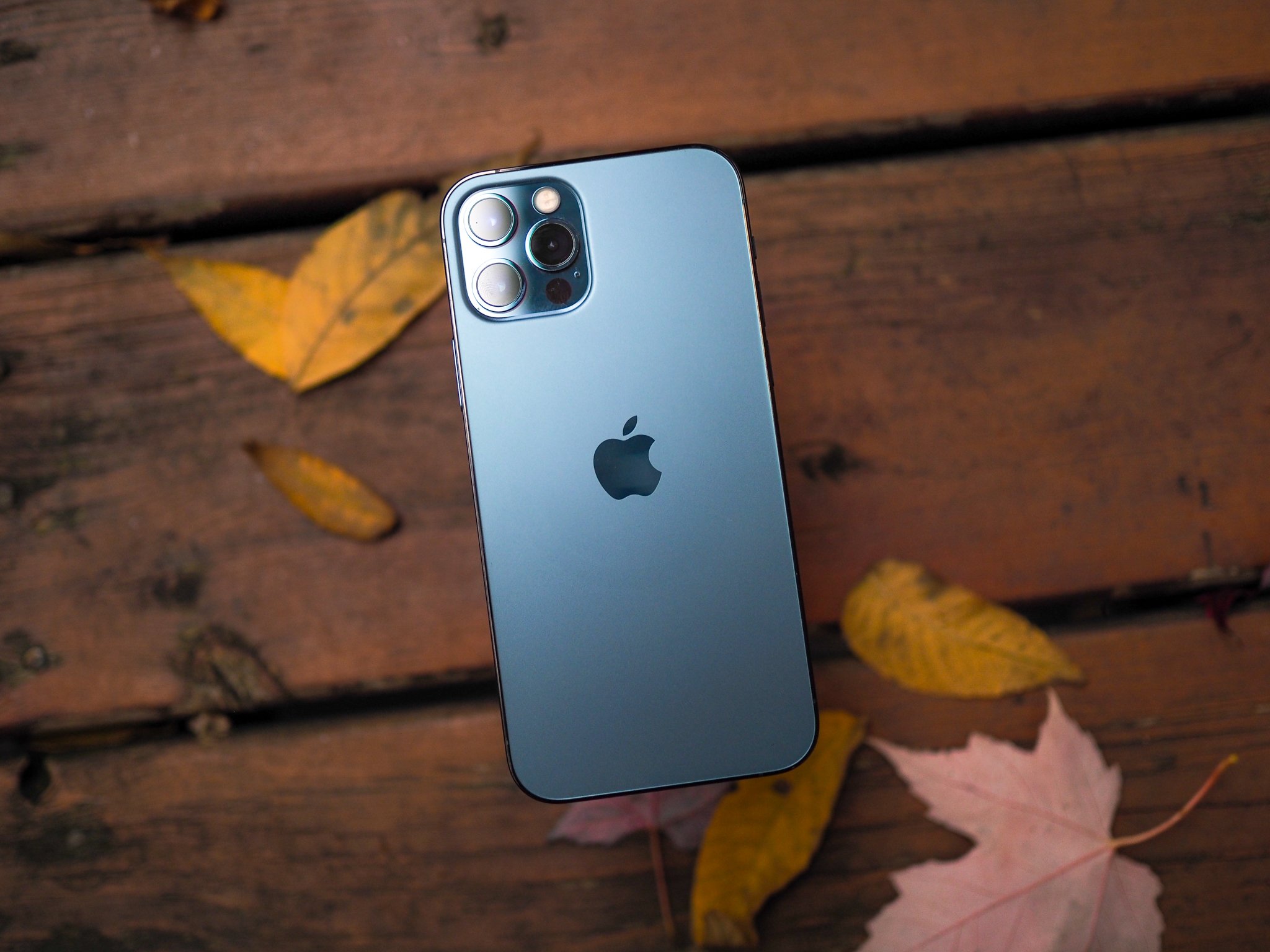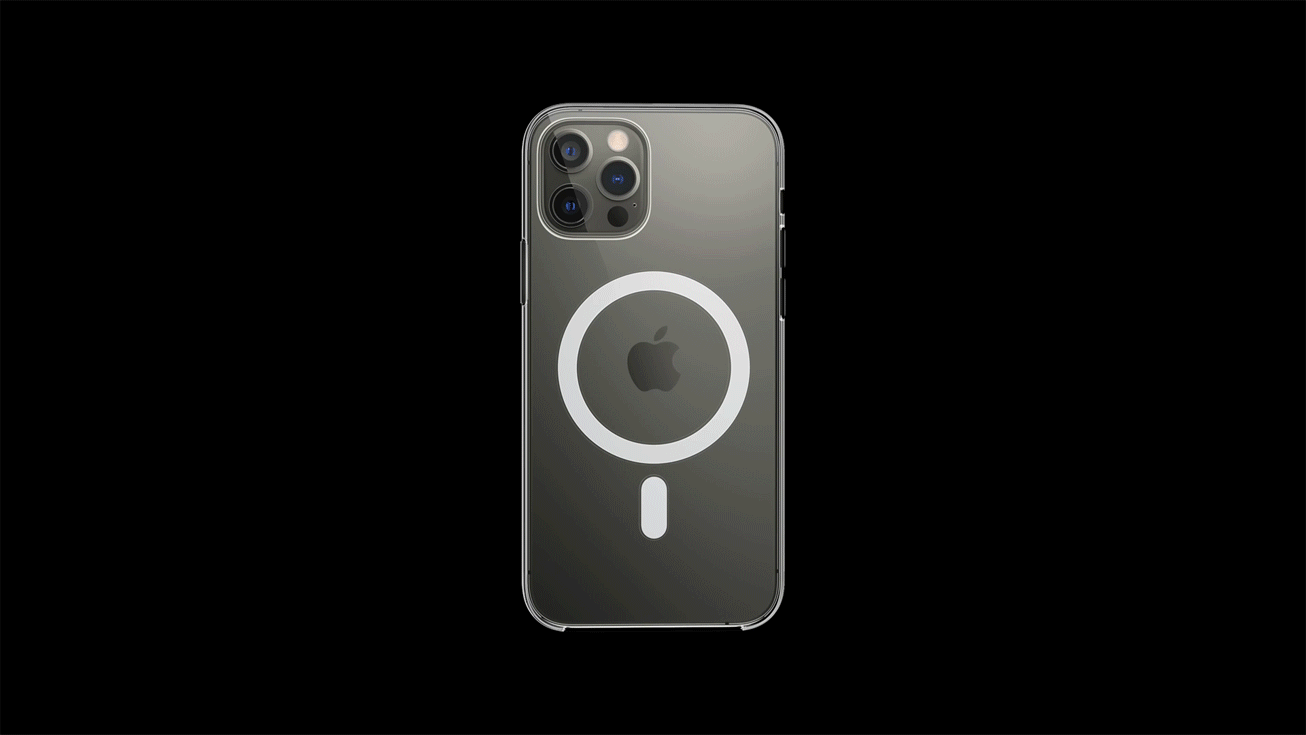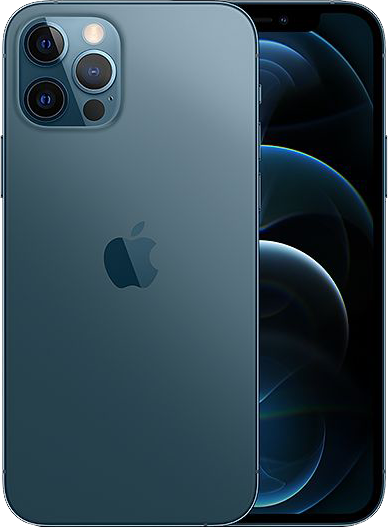iMore Verdict
The iPhone 12 Pro is easily one of the best phones of 2020, but it may not be enough of an improvement over the iPhone 12 to justify its additional $170 price tag.
Pros
- +
Superb performance
- +
Consistently good photo and video quality
- +
Improved industrial design
Cons
- -
Worse battery life than iPhone 11 Pro
You can always trust iMore.
If this past week had been different, this would probably be a different review. It would have involved me doing the kinds of tests that I do for every new phone I receive, assiduously searching for the nuances that readers like you may want to know.
But two things happened that changed the direction, and tone, of what you're about to read. The first is that my two-year-old daughter came down with a pretty bad cold, forcing my wife and me to keep her home from daycare, first for one day, and then two, and then six. The second is that, by juggling my already-busy week with the minutiae of childcare, I missed publishing this review with the first wave of iPhone 12 reviews.
Instead, I got the iPhone 12 Pro, put my SIM card in it, set it up while my daughter napped, and just used it. And in turn, I ended up documenting a week of extreme work and parenting with my phone, this new phone that everyone's talking about as an object of intense curiosity.
That's what the iPhone does: it excites, it pushes people on either side of the aisle, loyalist or rejector, to pay attention to it. And while I certainly spent the last few days noting the ways the iPhone 12 Pro is better than its predecessor, or different from the flock of Android phones out there today, I also appreciated how easy it was to adjust to, how quickly it did what I wanted, and most of all, how enjoyable it was to use.
iPhone 12 Pro review, day one First impressions
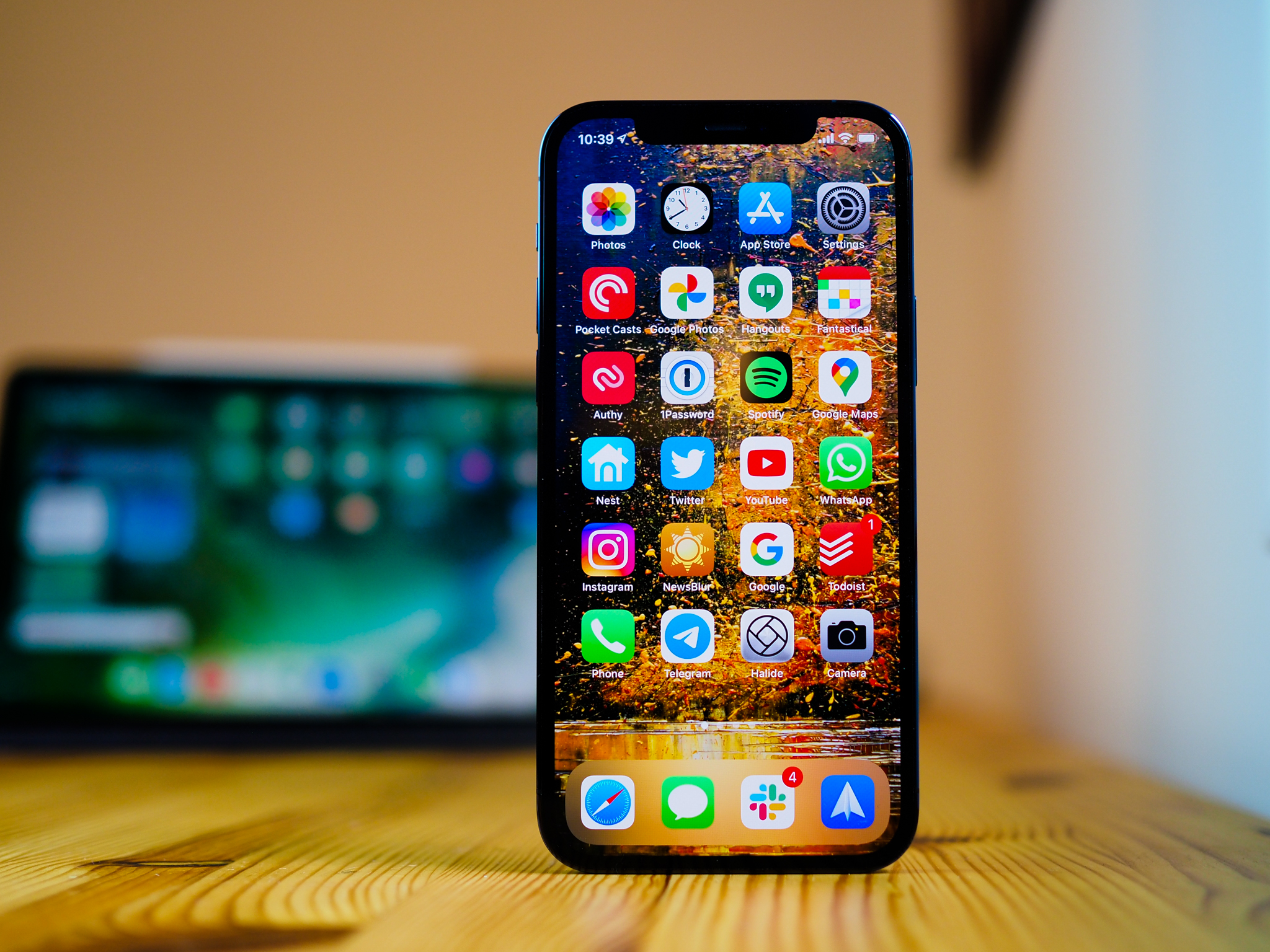
My iPhone 12 Pro review device is a Canadian unlocked model in Pacific Blue, which is objectively the best color of the new slate of models. Sorry, no follow-up questions. Out of the box, the color is subtle in the shade and shimmery in the sun, and it's clearly going to influence the rest of the industry throughout 2021, just as Apple's green iPhone 11 and 11 Pro hues had a profound influence over its competitors throughout this year.
The more boxy, angular design is certainly a throwback to the iPhone 4 and 5 eras, but the additional size and heft (at 187 grams, this thing is not light!) over those earlier phones make it a more imposing and, well, pro pick. It's honestly one of the nicest technology objects I've ever held.
Two iPhone 12 boxes for the size of one? This is what you get when you remove the AC adapter and earbuds from the iPhone box. pic.twitter.com/9isPp8xEb9Two iPhone 12 boxes for the size of one? This is what you get when you remove the AC adapter and earbuds from the iPhone box. pic.twitter.com/9isPp8xEb9— Daniel Bader (@journeydan) October 20, 2020October 20, 2020
After unboxing the iPhone 12 Pro, which is considerably easier given this year's notable omissions, I set it up and restore it from my iPhone 11 Pro's backup, which I made earlier this morning. My single homescreen restores perfectly (I've moved minimalist, opting for the App Library when I need to explore my catalog), and most of the apps work without needing to log back in. A few of them work but remind me that notification may be wonky. I fix the wonk and continue.
iMore offers spot-on advice and guidance from our team of experts, with decades of Apple device experience to lean on. Learn more with iMore!
I love how easy it is to switch from one iPhone to another, but the restore process is still inconsistent app to app.
I restore many more Android phones than iPhones (there are a lot of Android phones out there!), and I'd say the iOS 14 restore experience is better than a generic Android cloud restore (going from, say, a Samsung to an LG), on par with a Samsung-to-Samsung restore (which basically mirrors one phone to the other, but has some settings wonk), but not as good as a Pixel-to-Pixel restore, which is pretty much flawless.
After restoring the phone, I don't have much time before I just need to start using it — my daughter is awake — so I stick the phone in my new $49 Cypress Green iPhone 12 & 12 Pro Silicone and get to work. The case is, honestly, fantastic, a much softer silicone material that's easier to get in and out of tight jean pockets than previous models.
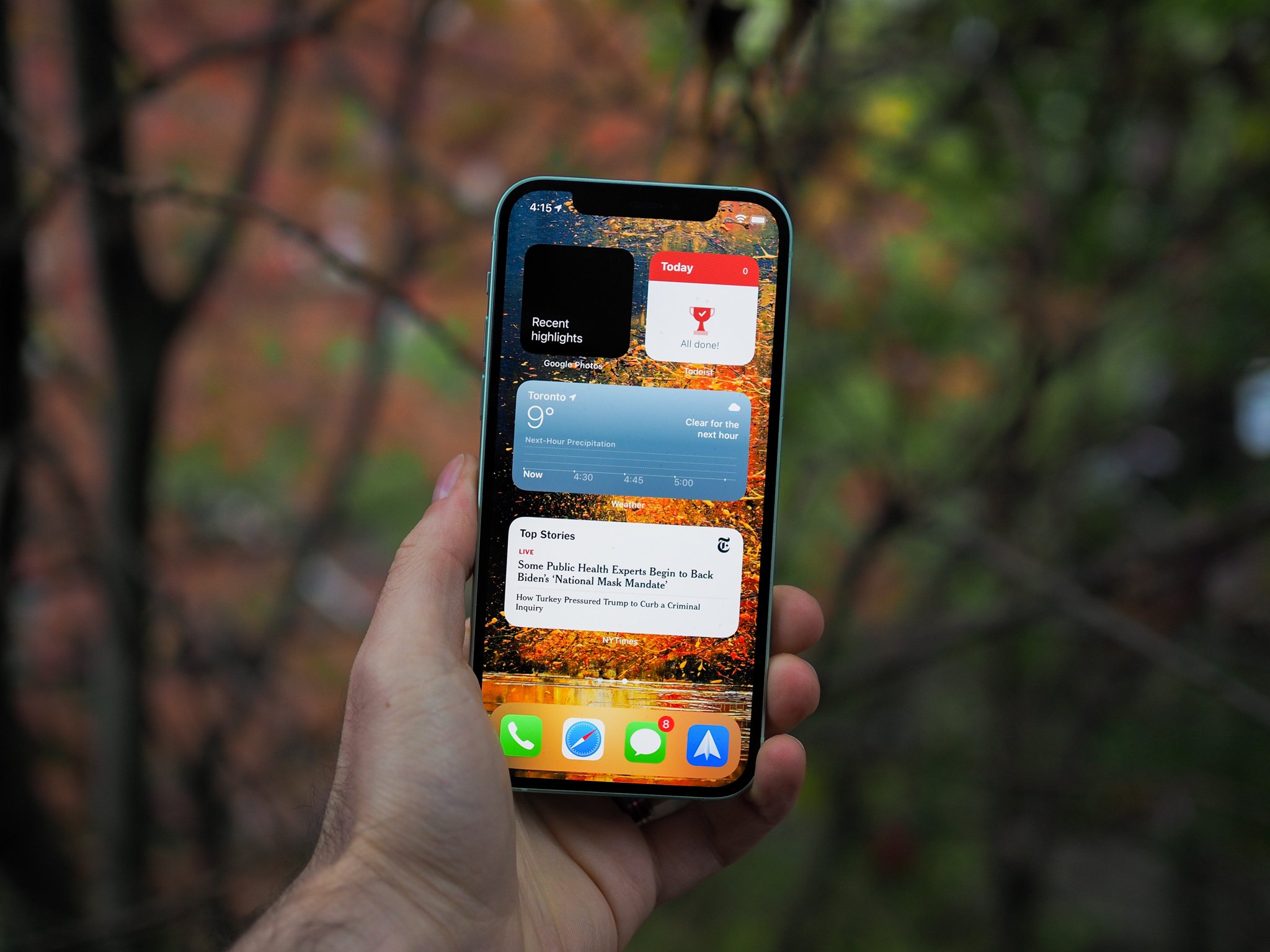
I've spent a lot of this year using the iPhone 11 Pro in one pocket and an Android phone of various sizes in another, and the iPhone 12 Pro's size feels completely manageable to me, though I do wish it were a few millimeters shorter — reaching the top of the display requires ever-so-slightly more acrobatics than I'd like. Still, at 7.4mm thin and only 0.1mm wider than the 11 Pro, the 12 Pro is super comfortable to pick up and use, put down briefly, and pick up again (and repeat, ad infinitum) throughout the day. That's what I do, because as much as I love spending time with my kid, I still have to work.
As I go about my first day with the iPhone 12 Pro, and as the phone settles down after apps restore and background processes complete, I notice that the larger display is a clear advantage over the 11 Pro's 5.8-inch OLED panel. It doesn't make an enormous difference, but having those additional horizontal and vertical pixels makes the content a little easier to consume — videos are larger, and there's more text to read without scrolling.
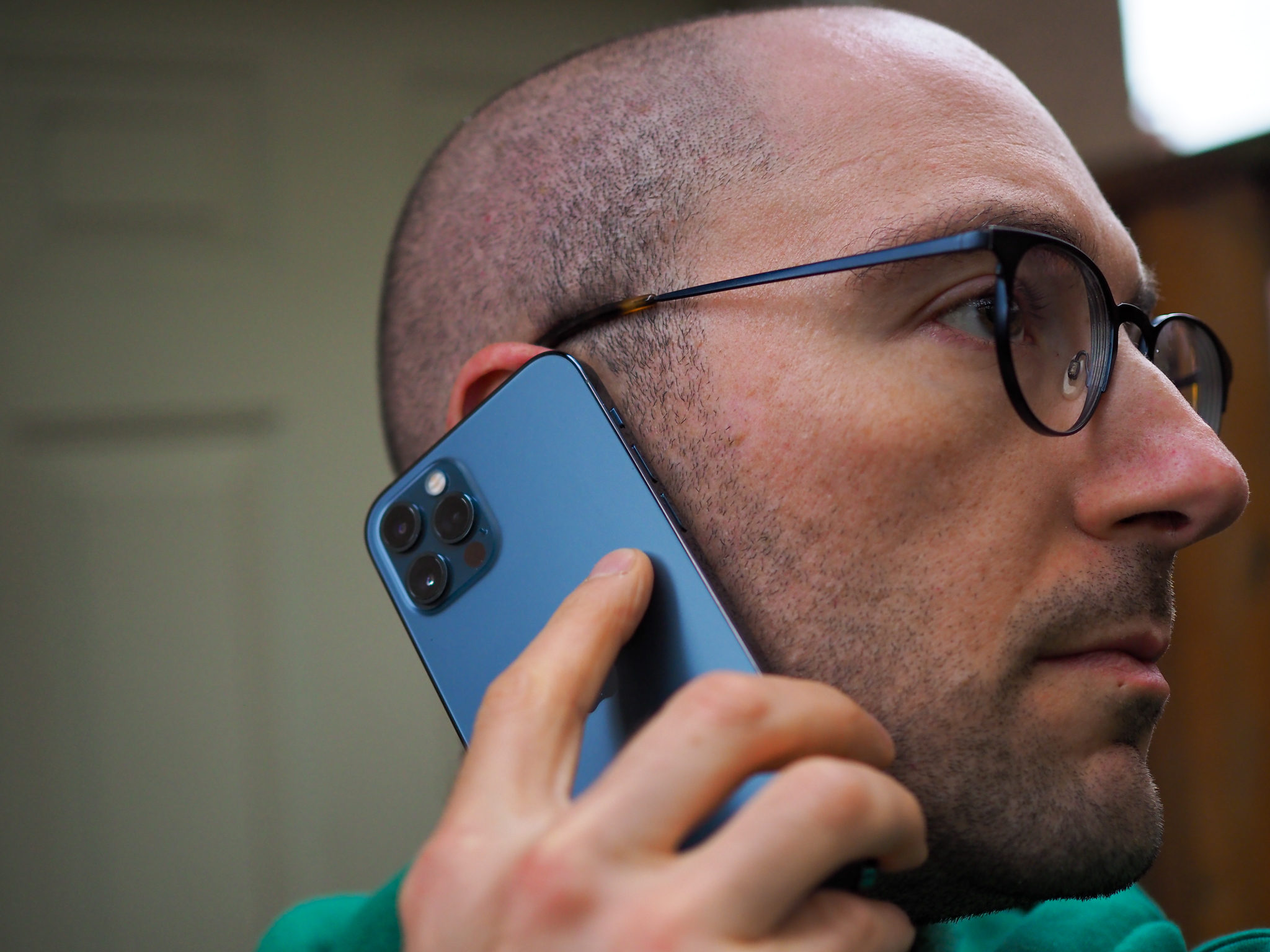
It also brings me closer to some of the experiences I have on larger Samsung phones like the Galaxy S20+, which has a 6.7-inch screen in a body with a higher screen-to-bezel ratio than the 12 Pro (we're talking 90% compared to 86%). But those phones also don't have a notch, and rely on slower in-display fingerprint sensors for biometrics; I love Face ID, and wish it was on every phone I use, even if that means dealing with a notch.
Given that I transitioned to the iPhone 12 Pro from the Pixel 5, and from the Galaxy S20 FE before it, the drop from 120Hz to 90Hz to 60Hz is noticeable. But it's also something that doesn't bother me unless I have another phone — or an iPad Pro, I guess — side-by-side. I'm disappointed Apple didn't offer the option, but given that the iPhone 12 Pro already offers a slight regression in battery life over the 11 Pro, its absence is not surprising.
At the end of day one, I place the iPhone 12 Pro on the Qi wireless charger next to my bed, exhausted, with the battery reading 13%, my alarm ready to go for 6:30am.
iPhone 12 Pro review, day two Getting reacquainted
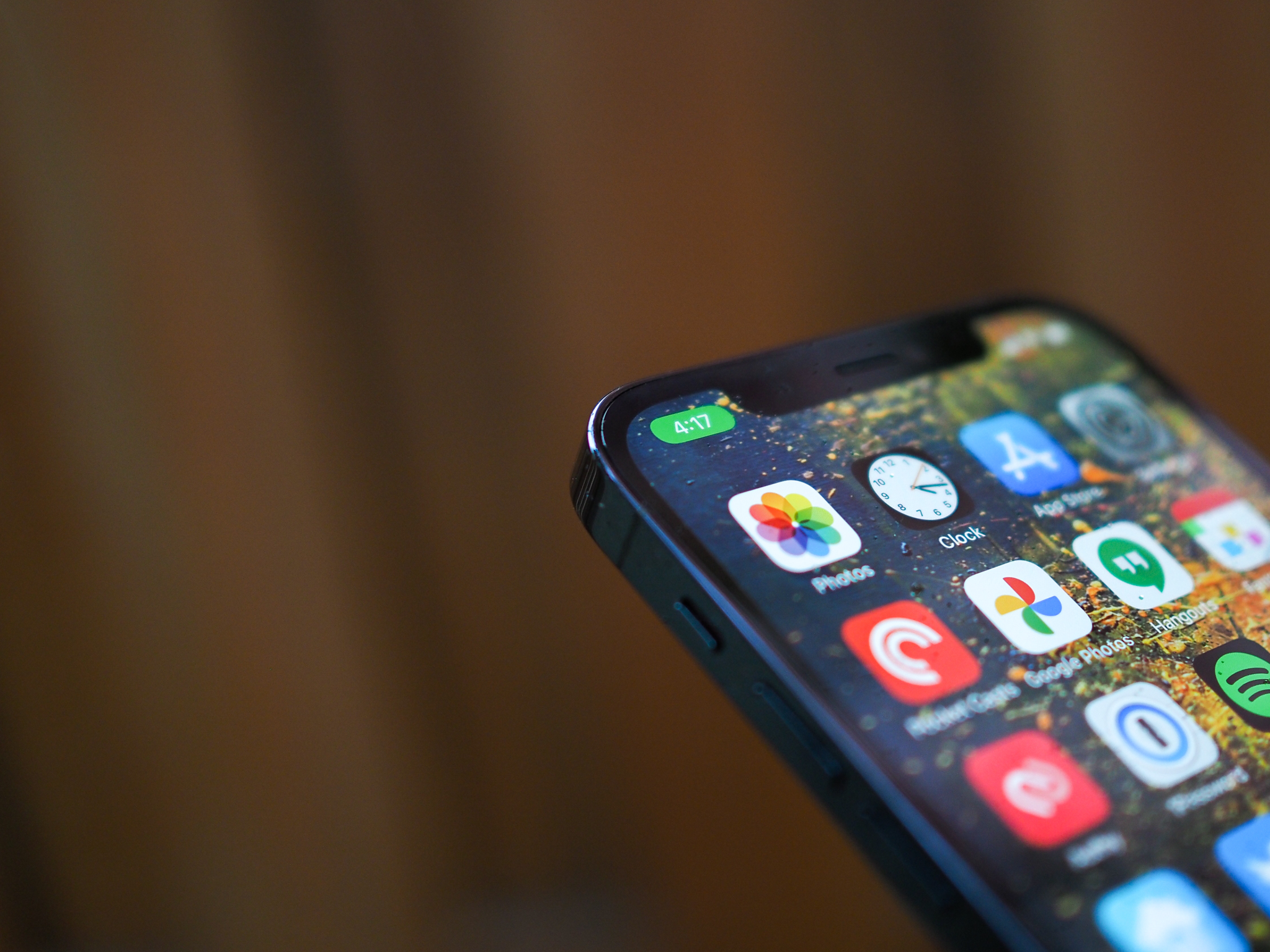
When it comes to performance, new iPhones need to be graded on a curve. The A14 Bionic is objectively the fastest mobile processor on the market, but it doesn't feel notably faster than the A13 Bionic in the iPhone 11 Pro or the A12X in my 2018 iPad Pro.
But what I do notice, especially coming from the Pixel 5, is how much less time I spend waiting for apps to open. This is very clearly a very powerful phone that's able to do far more than I'm currently asking of it.
I dive into day two the way I always do, giving my daughter breakfast and then lacing up my boots to take my dog for a walk. I always carry a pair of wireless earbuds with me, and this morning I grab my AirPods Pro, strapping on my Apple Watch Series 6 at the same time. I've been wearing a Fitbit Sense every day for the past month, and rotating between a number of wireless earbuds based on my needs, but when Apple claims to sell an ecosystem of products, there is something to that.
The Apple Watch is probably the piece of technology I enjoy using the most, but it needs an iPhone to function. When I'm not wearing one, I miss it. Similarly, there are better wireless earbuds for most people than the AirPods Pro, but the advantages of having instant pairing, a rock-solid connection, and the ability to seamlessly switch back to my MacBook when I'm back at my desk, increases the overall value of the iPhone itself. Waves upon waves, and all that.
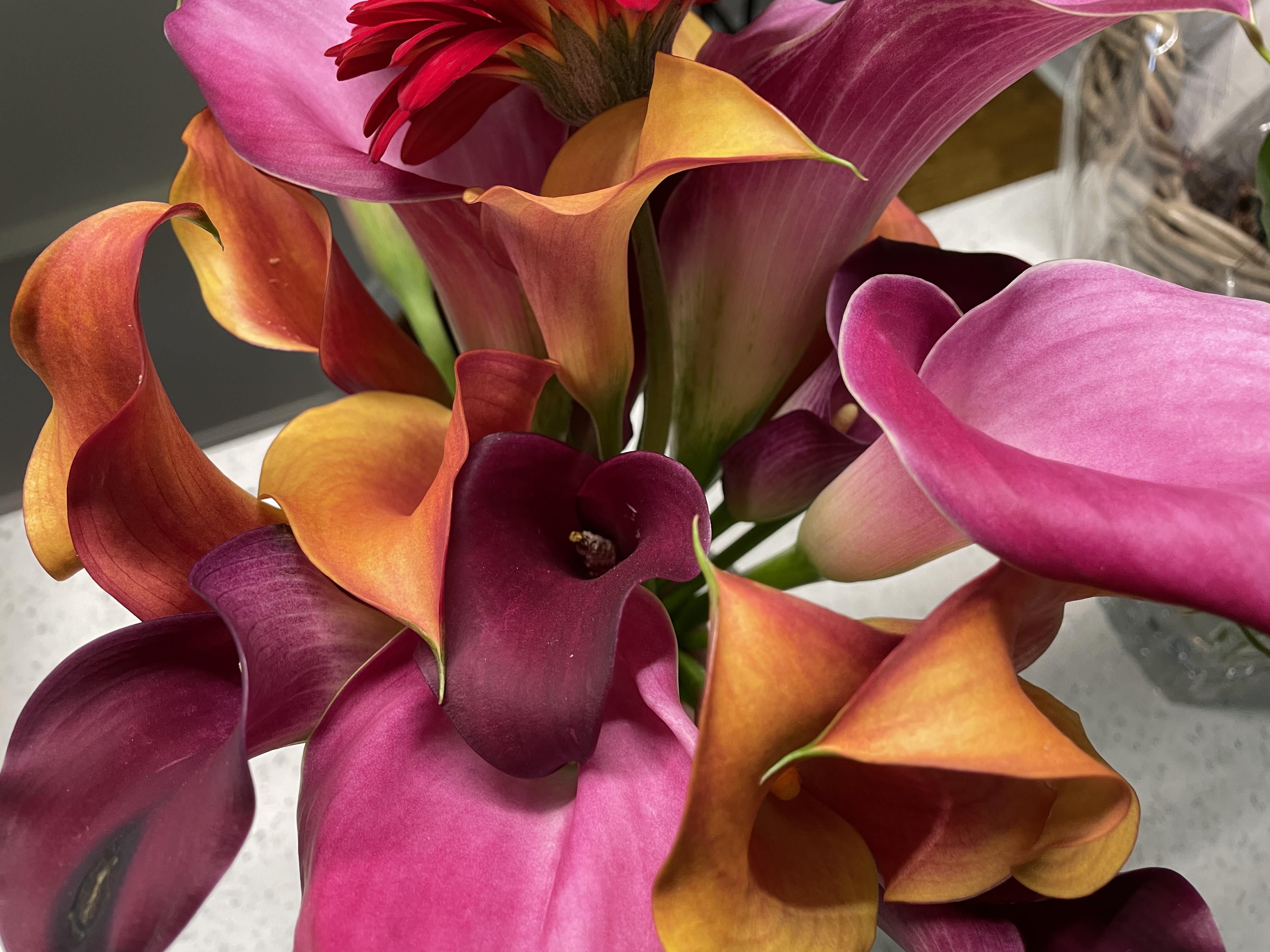



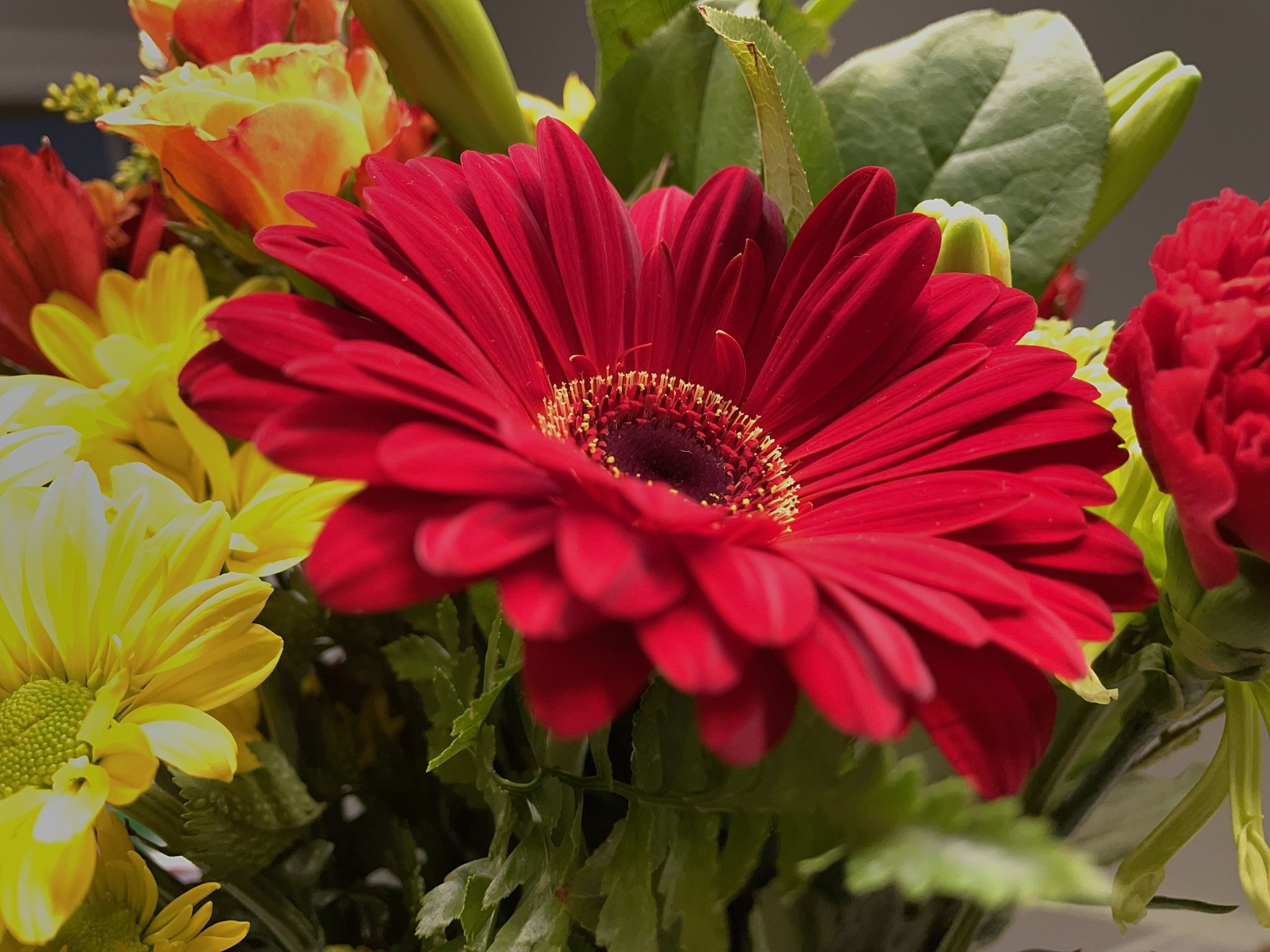
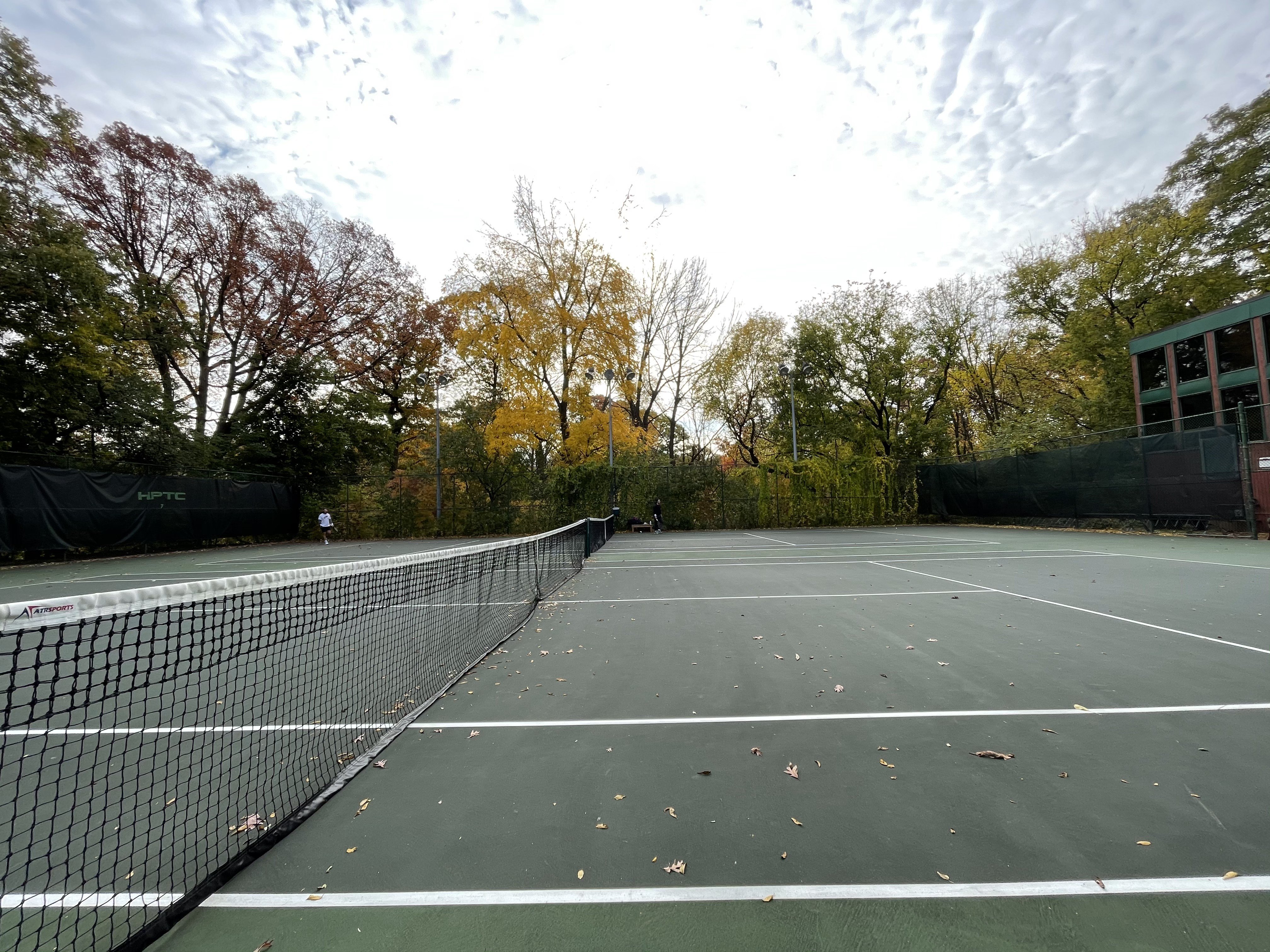
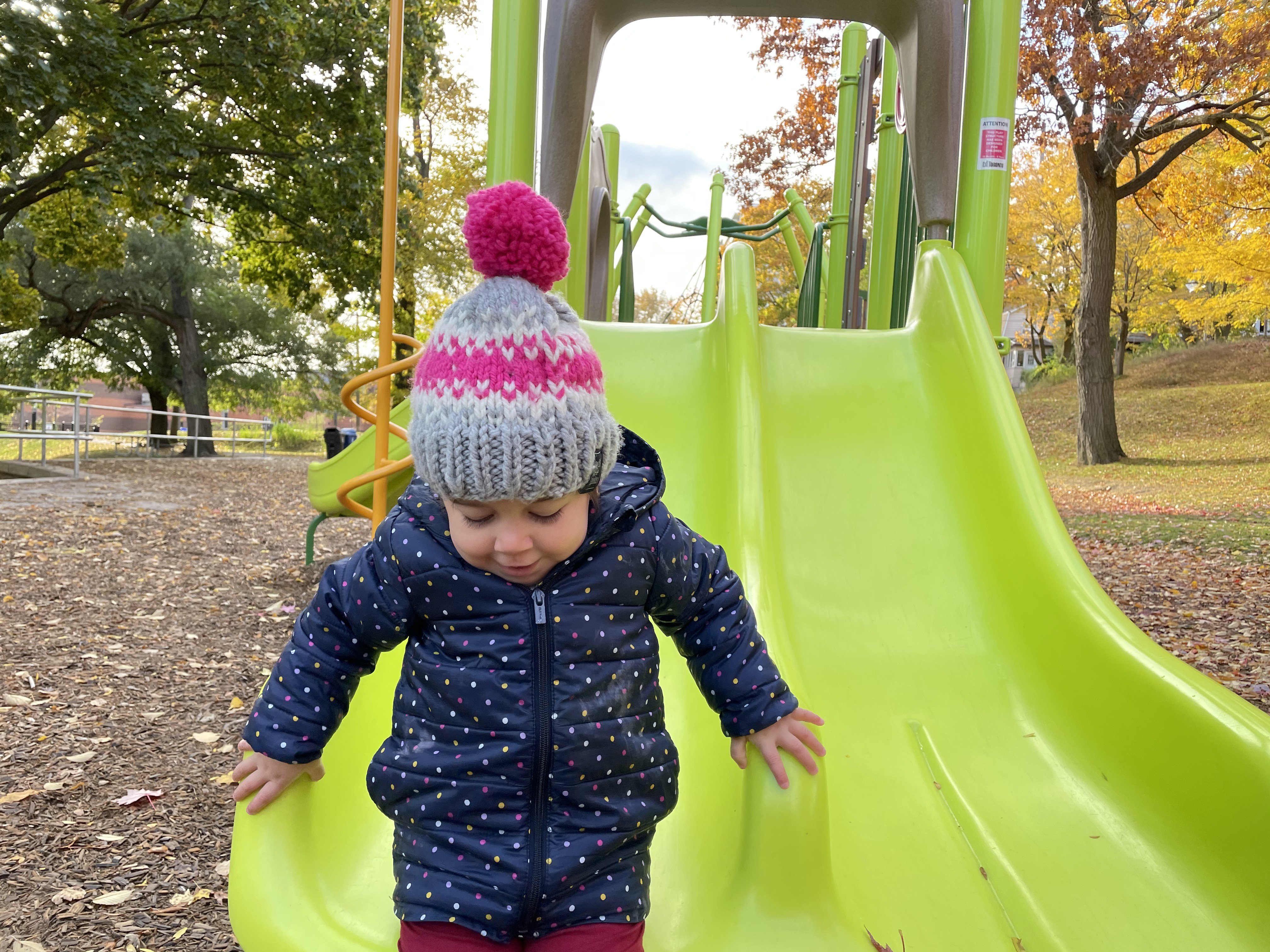




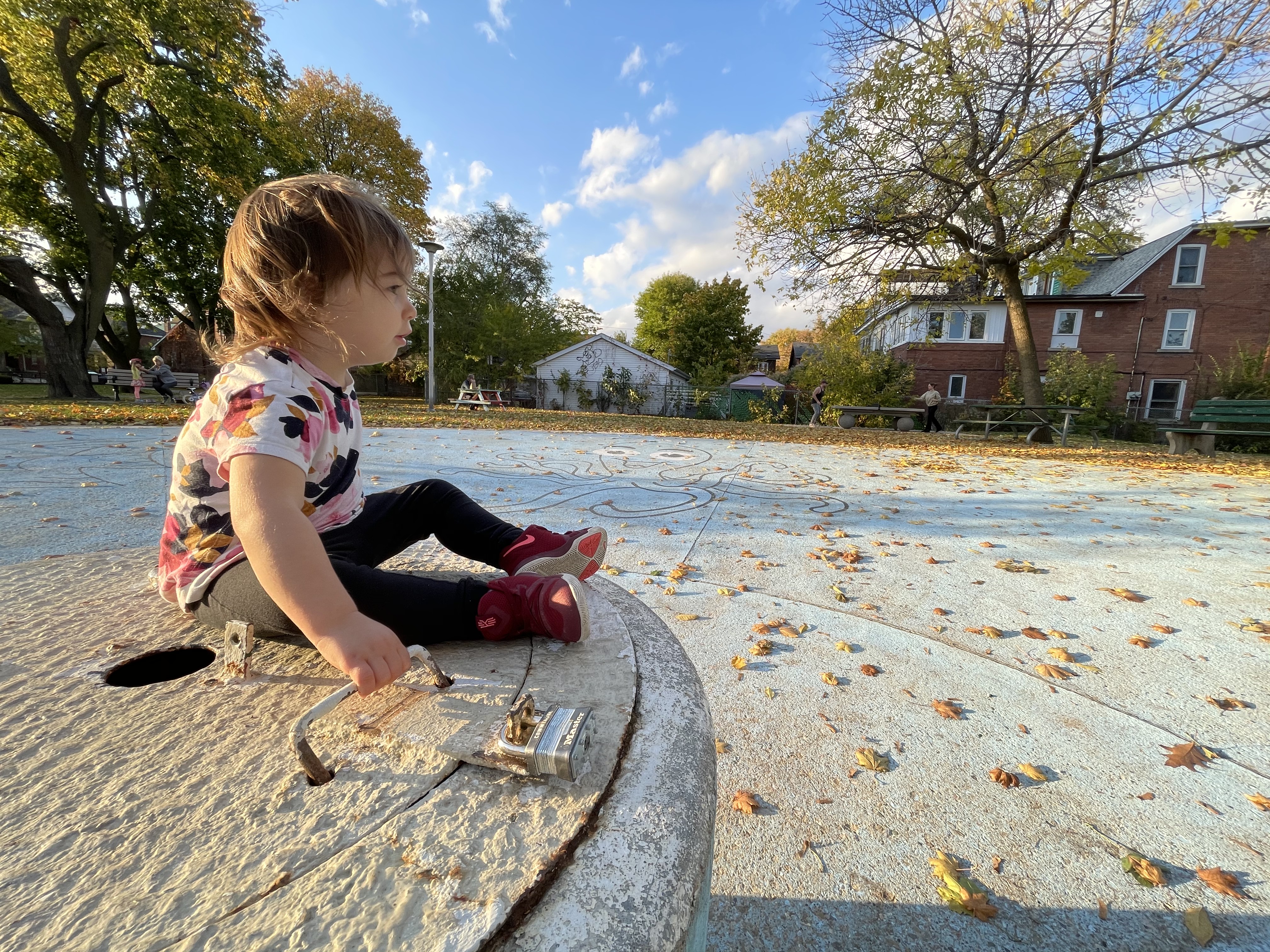
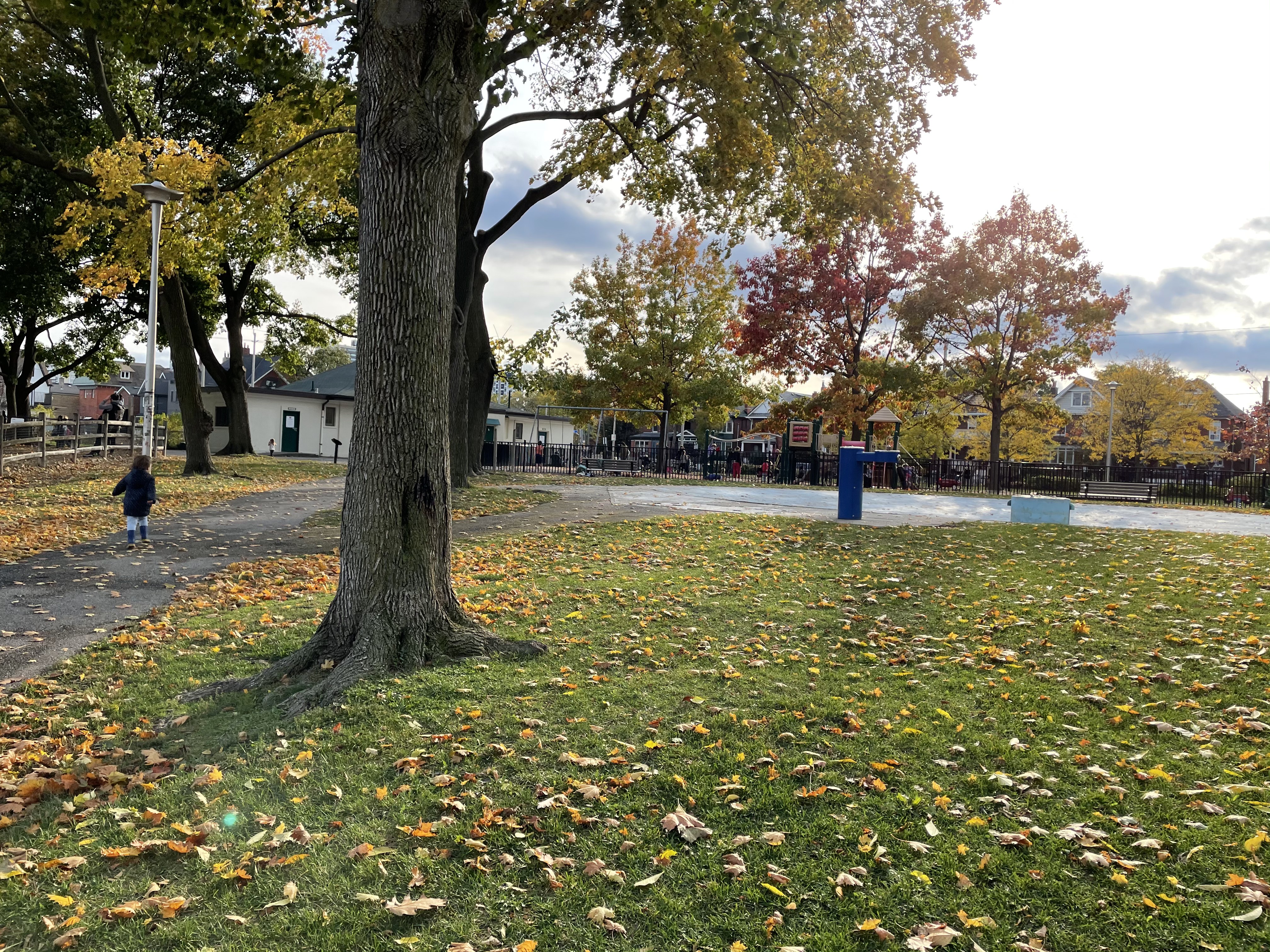

On the walk, I start snapping photos with the iPhone 12 Pro's cameras, all of which are very similar to the 11 Pro's but somehow take better shots in every condition. Aside from all-day battery life, a consistent camera experience is my primary concern when using a phone, and the iPhone 12 Pro doesn't disappoint.
If you're coming from an iPhone XS or earlier, this phone is going to be a massive camera upgrade.
It's not the massive improvement we saw from the XS to the 11 Pro, but I'm particularly impressed by its flexibility in almost every lighting condition; despite the 11 Pro's massive low-light quality gains, the 12 Pro has two key advantages: a wider f/1.6 aperture, which lets more light hit the sensor; and a lidar scanner, which makes it much easier to focus on subjects in the dark.
While I often still prefer the photos that come out of the Pixel 5, mainly because of color science, I appreciate that the iPhone camera is good in every situation, and is reliable in a way that no other Android camera is.
At the end of day two, my battery is at 8%.
iPhone 12 Pro review, day three Making it through the day
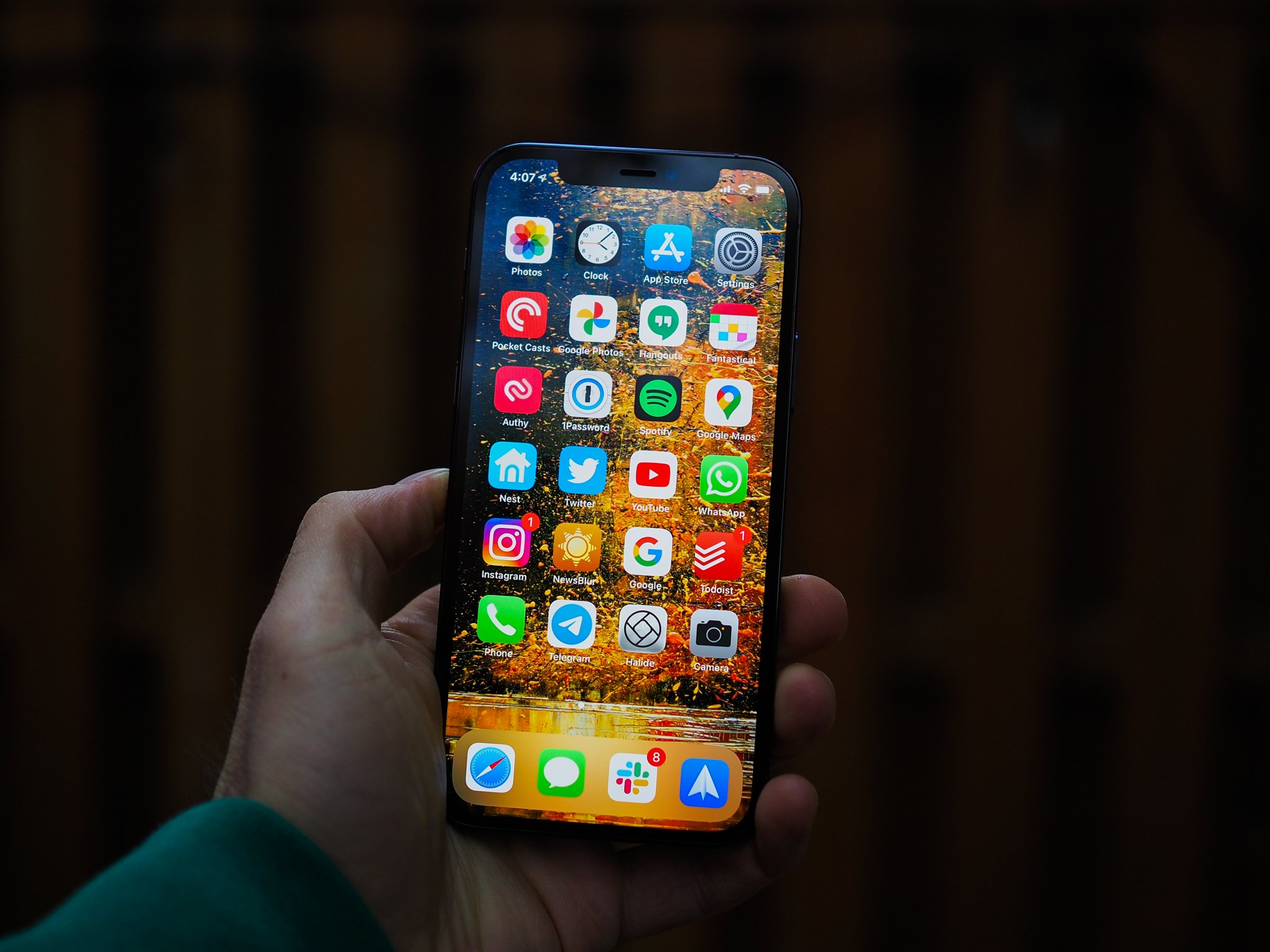
A lot has been said about the iPhone 12 Pro's smaller battery, and how Apple kind of reversed its stance on thicker phones with the 12 series after the 11 and 11 Pro gained larger cells a bit of stoutness as a result. The batteries in the 12 and 12 Pro are identical, we know now, and are 8% smaller than the 11 Pro's, which is about what I would say is the difference in overall uptime.
Mainly I'm finding that the phone lasts all day, but has less additional capacity by the time I go to bed, which feels reasonable given its svelte body — it's all about compromise. I probably wouldn't mind a larger battery on the iPhone 12 because it's already so much lighter and thinner than the 11, but chunking up the 12 Pro, and adding additional weight, would be a non-starter for me. In a case, it already verges on being a bit too heavy for me.
Still, today I'm happy with the phone's battery life and don't really have any complaints. But it is worth talking about MagSafe, which I received as part of my reviewer's kit but is, on its own, a $39 addition. I also bought a second one so I can use it next to my bed and in my office.
On paper, MagSafe doesn't make sense. It's just a magnetic wireless charger; why would you want that? But the more I think about it, and use it, the more useful it becomes. First, I literally had the problem last night MagSafe ostensibly solves where my iPhone didn't charge because it was misaligned on my beside wireless charging stand. I woke up this morning with my phone hovering at 2%.
Secondly, MagSafe is small, so it's easy to fit anywhere on a desk. A lot of reviewers have been comparing it to the size of a Lightning cable and saying how much larger and more cumbersome it is, but that's not the right comparison; you have to compare it to other wireless chargers, especially those that offer high speeds, and for Apple to offer 15 watts in a puck this size is actually an engineering triumph. It can even charge other phones, or small accessories like true wireless earbuds.
MagSafe is the cutest little wireless earbuds charger pic.twitter.com/mtoObgqeDXMagSafe is the cutest little wireless earbuds charger pic.twitter.com/mtoObgqeDX— Daniel Bader (@journeydan) October 22, 2020October 22, 2020
Finally, the magnets are incredibly useful. It makes it impossible to misalign the coils, so high-speed charging is guaranteed every time, not just when the placement is perfect, but it also lets you use the phone while it's charging, or keep it close by without the charger taking up too much room. And yes, it's easy to plug in a Lightning cable, but it's much easier to set a phone down on a wireless charger. That's why wireless charging has become so ubiquitous despite its slow speed.
Obviously, though, MagSafe isn't perfect. It only offers the full 15 watts of speed on the iPhone 12 when it's connected with the company's 20-watt charger, which comes neither in the iPhone's box nor MagSafe's. That's a pretty bad deal if you ask me.
I gave my toddler a brand new iPhone 12 Pro to hold but even she was too scared to drop-test this phone.
My daughter loves watching YouTube, specifically Sesame Street. On the way to the park I give her my phone to hold, both as a way to stress the battery — need to test it in the real world — but also to see, should she drop it, whether the new Ceramic Shield glass holds up to in-motion drops. But against all odds, she keeps the phone firmly in her grips.
It's the end of the day and I used the MagSafe to top up my iPhone 12 Pro for a few minutes while my daughter slept; my phone is at 34%.
iPhone 12 Pro review, day four Finding 5G
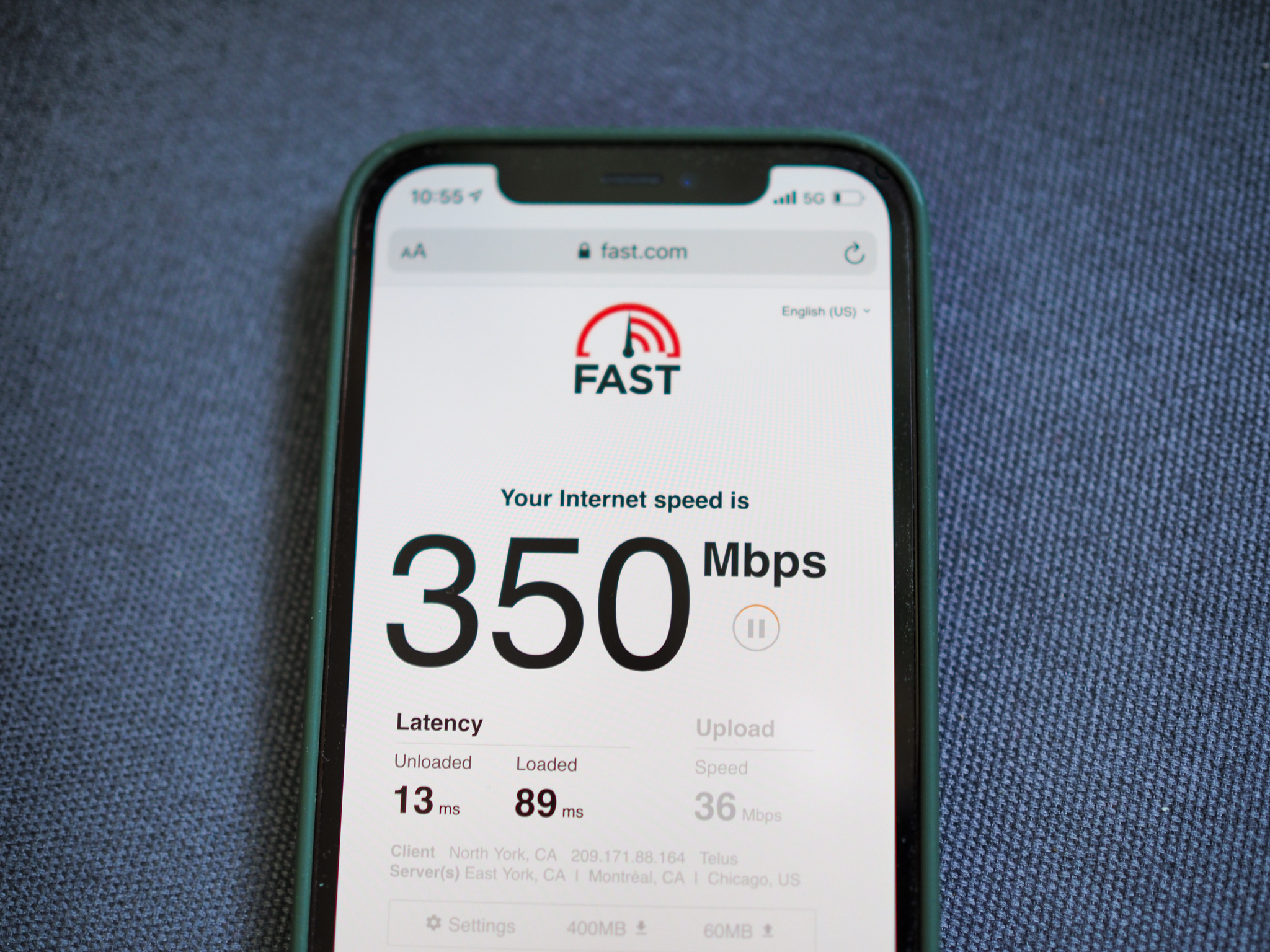
Today I set out to find 5G, which is fairly easy here in Toronto, but it's not the ultra-fast kind that many Americans can access through Verizon's mmWave network.
The 5G I get when I walk down the street is called sub-6, and it's most likely similar to what you're going to get wherever you are in the world: fast, but not dramatically more so than what's currently available on 4G.
The 5G speeds I get are very fast, but they're still in the realm of LTE, and that's all most people can expect right now.
When I find a good 5G signal, I get over 300Mbps download speeds on the iPhone 12 Pro, which is considerably higher than I usually see on Telus's 4G LTE network. But I am more likely to get around 150Mbps, which is also what I usually get on LTE. In other words, 5G is promising but it's just that, a promise, not a solution to some problem we can't currently accomplish on our phones. Eventually, that may change, but the 5G signal I see on my iPhone 12 Pro doesn't comfort me. It just is.
After walking around the city all day testing 5G, at bedtime my battery is 23%.
iPhone 12 Pro review, day five Versus the 12

I'm starting today by setting up other iPhone I was sent earlier this week, the iPhone 12. I want to make sure I understand what separates the two phones, and whether I can recommend the 12 Pro to my friends and family — and to you — like I could the 11 Pro over the 11 last year.
The iPhone 12 and 12 Pro are incredibly similar, but I'd argue the 12 Pro is worth the extra money for people with kids or pets.
If you've read other reviews, you've likely come to understand just how similar these two phones are, and until the 12 mini and 12 Pro Max are available in November, we won't have a full picture of Apple's 2020 lineup. But based on the current availability of these two phones, I have to say what a lot of people have been saying: if you use the telephoto lens on a regular basis, you should buy the 12 Pro and not look back. For me, the telephoto lens is crucial to good baby and pet photos, since it lets you get closer without sacrificing (much) quality.
The lidar sensor, too, feels like one of those features that's going to be important down the road, if and when AR becomes more ubiquitous, but right now, its presence merely means faster and more accurate autofocus in low-light situations. Plus, if you take a lot of photos and need the 12 Pro's base 128GB of storage, that's also a bonus.

But for everyone else, I'd recommend sticking with the cheaper and almost-as-good iPhone 12. It's just as fast, the screen is basically the same (its average brightness is slightly lower), and it's lighter, which makes a big difference when you're carrying something around in a pocket all day.
When the light goes down, I take both photos out and compare the low-light shots, and the lidar sensor on the 12 Pro really does make a difference in hitting and maintaining focus. That the iPhone 12 doesn't have either a telephoto or lidar shouldn't matter to most people, but I appreciate their presence on the 12 Pro, and once I'm able to go out and enjoy myself at a bar again, I think the additional sensor data will come in handy.
At bedtime, my iPhone 12 Pro is at a cool 24%.
iPhone 12 Pro review, day six A day at the park
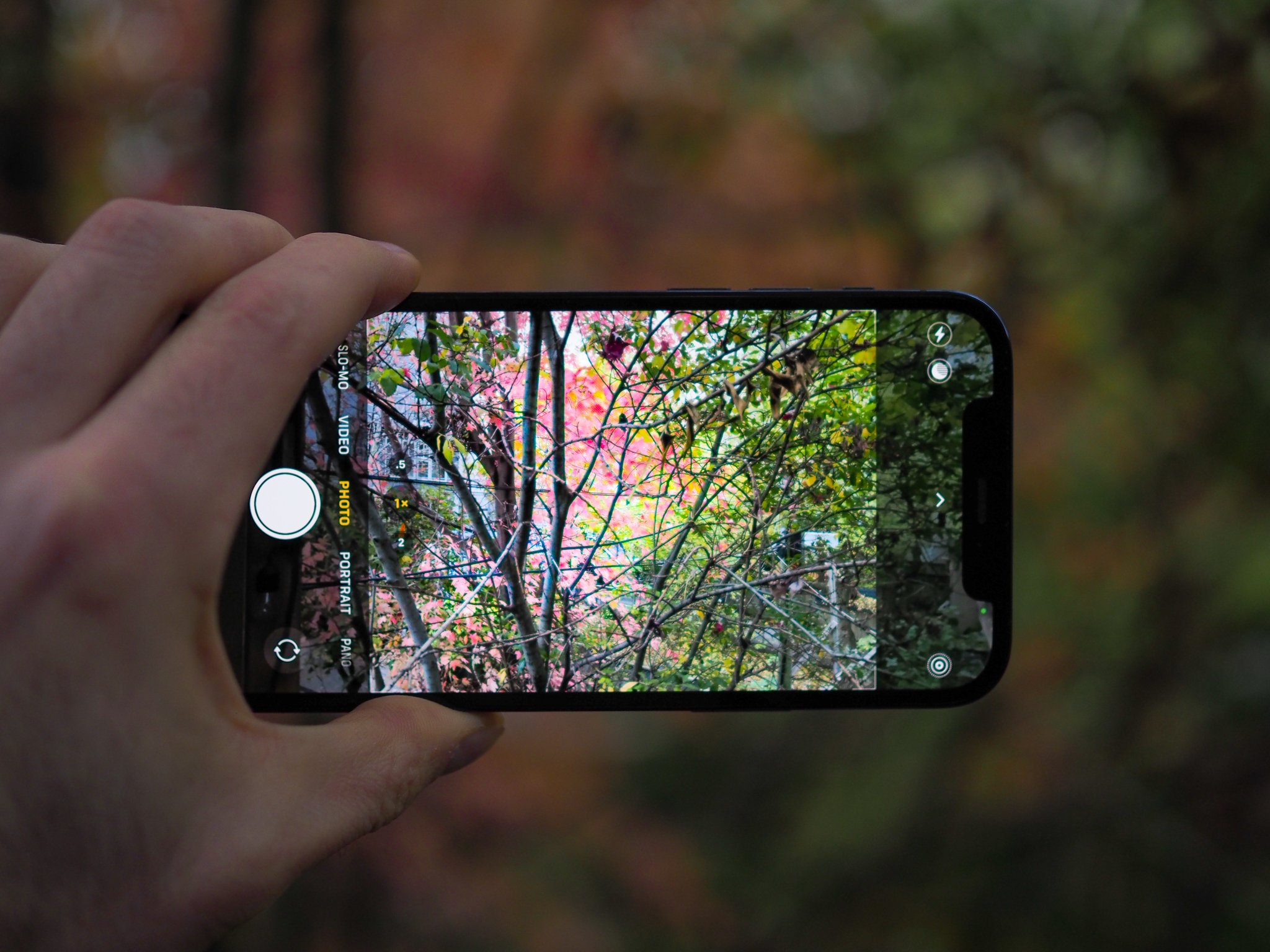
I'm meeting a friend for a walk today, so I take my iPhone 12 Pro along with the Pixel 5 and Galaxy Note 20 Ultra to a park to capture some fall foliage.
I take a photo of a beautiful fall park scene, with the three phones behaving very differently in the same lighting. The Note 20 Ultra wins this scene despite some issues, by preventing the highlights in the sky from blowing out while maintaining a tremendous amount of detail in the foreground. The iPhone 12 Pro does well, too, deftly handling the bright sky and the colorful foliage while also keeping the leaves on the ground at proper exposure. The Pixel 5 looks muddy and overly contrasty, and quite disappointing.



I take the same shot with the three phones' ultrawide cameras, and while none of them look particularly good, the Note 20 and iPhone 12 Pro come out on top.

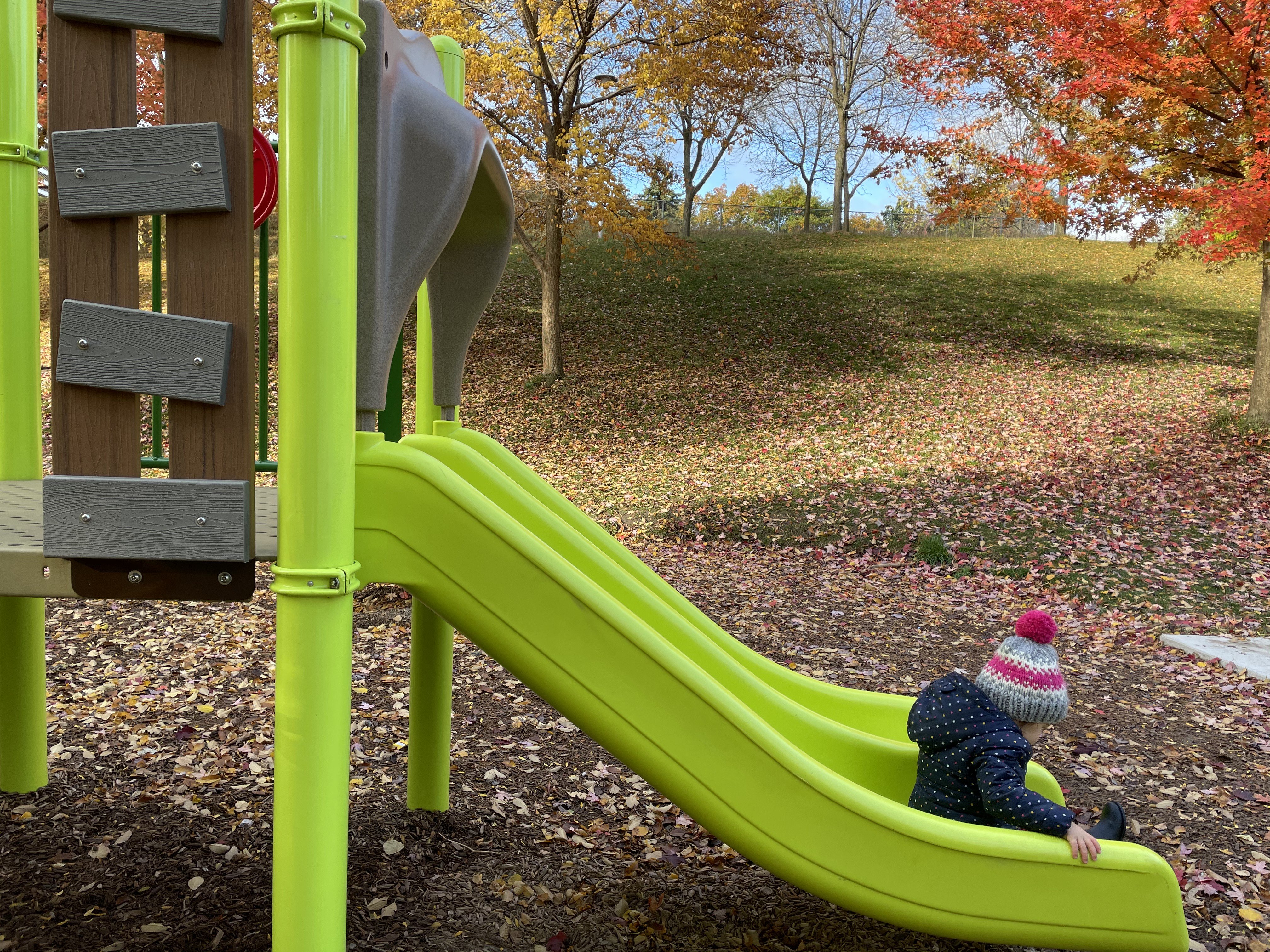


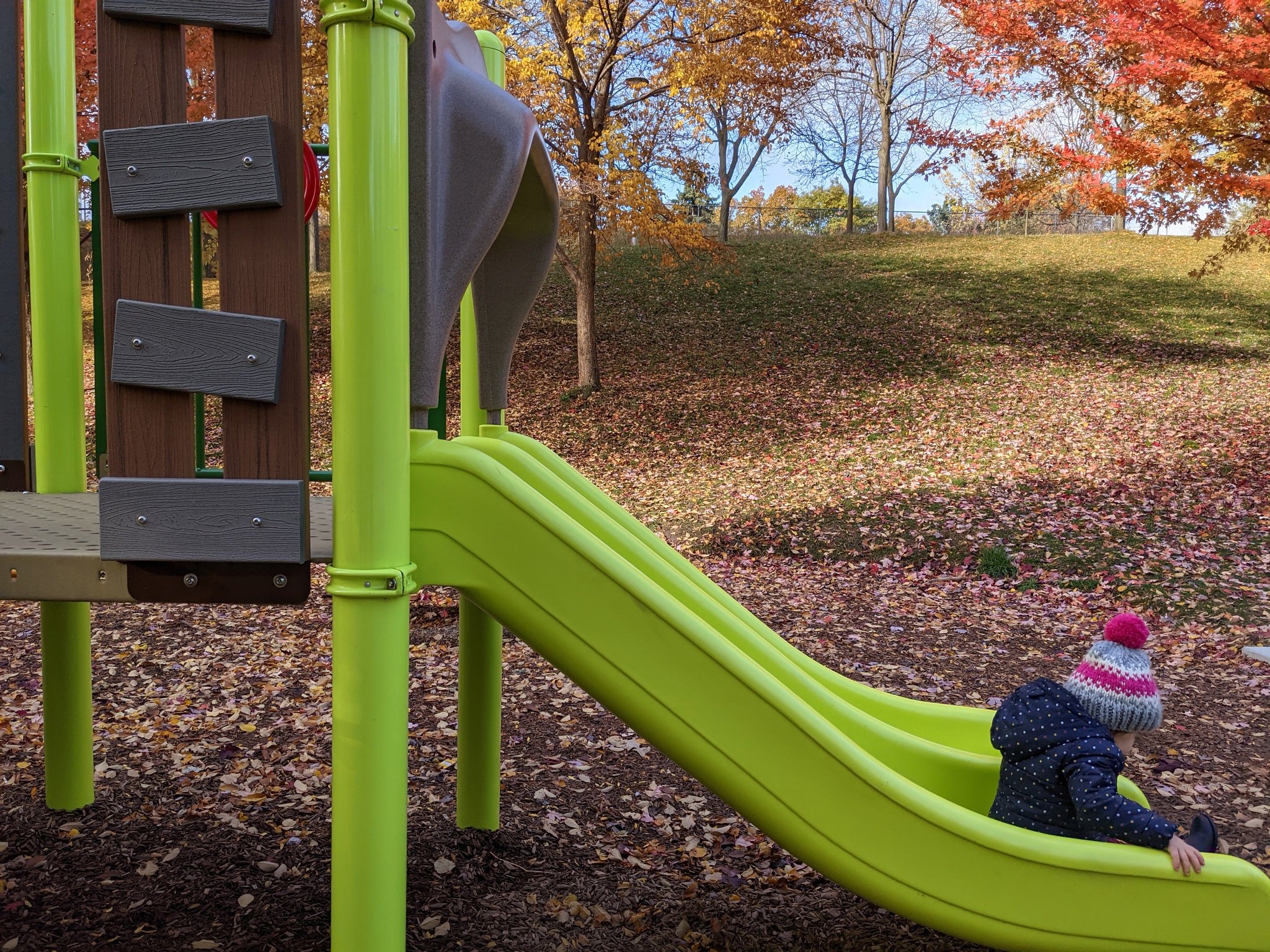

Later in the day, I take my daughter to play on the local playground and jam a Pixel 5 in my other pocket to compare to the iPhone 12 Pro. It's a very sunny day and I'm running around trying to get the same shot from both phones. The iPhone shots appear to be brighter and punchier, with saturation levels turned up a notch compared to the more muted and cooler Pixel 5 photos.
SmartHDR 3 on the iPhone 12 Pro appears to be trying to optimize for social media straight out of the camera; everything looks just a bit too overprocessed for my tastes, but Apple also does a better job with overall dynamic range, preserving the highlights in the brighter areas without making the shady parts difficult to discern.
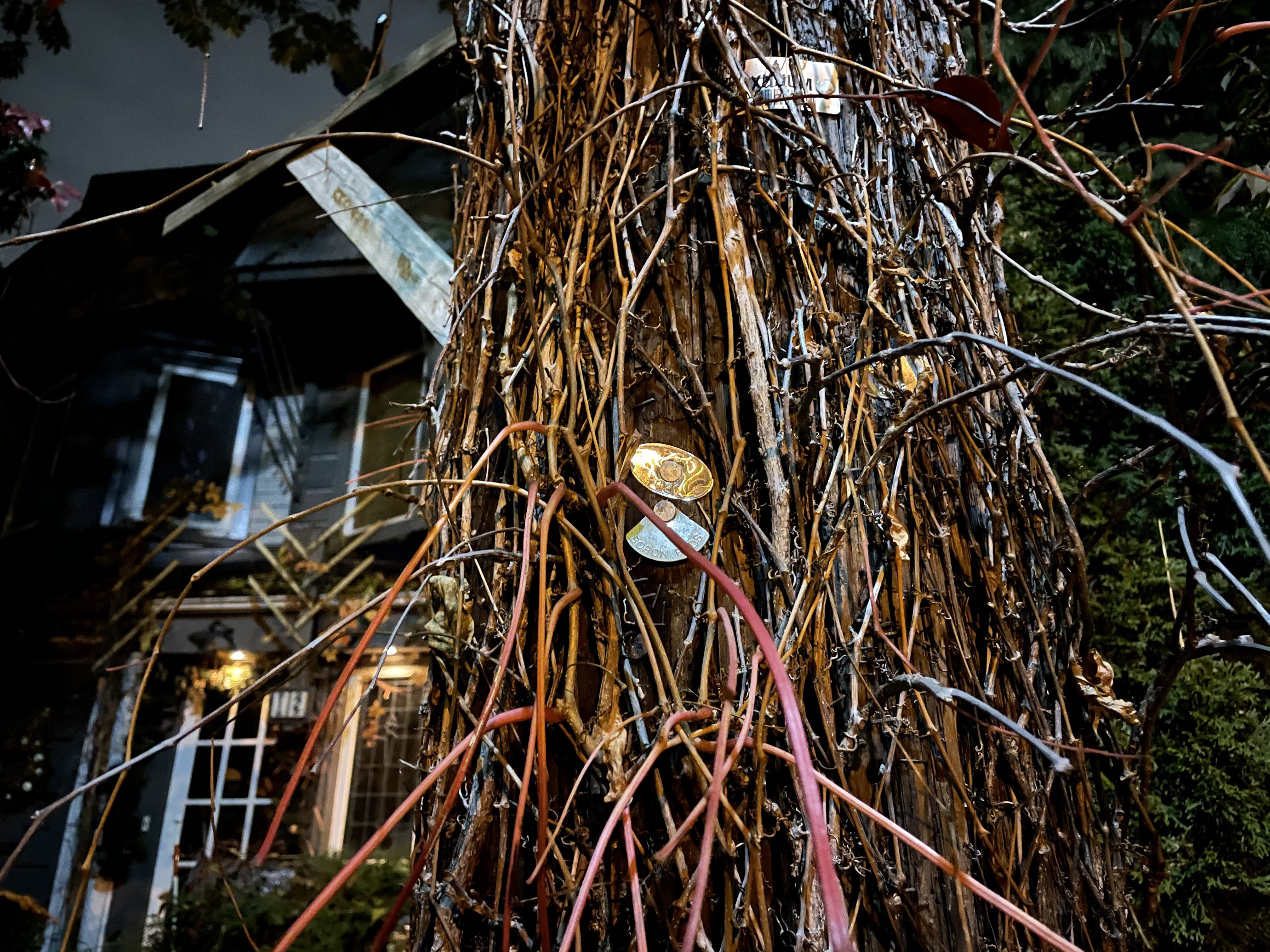
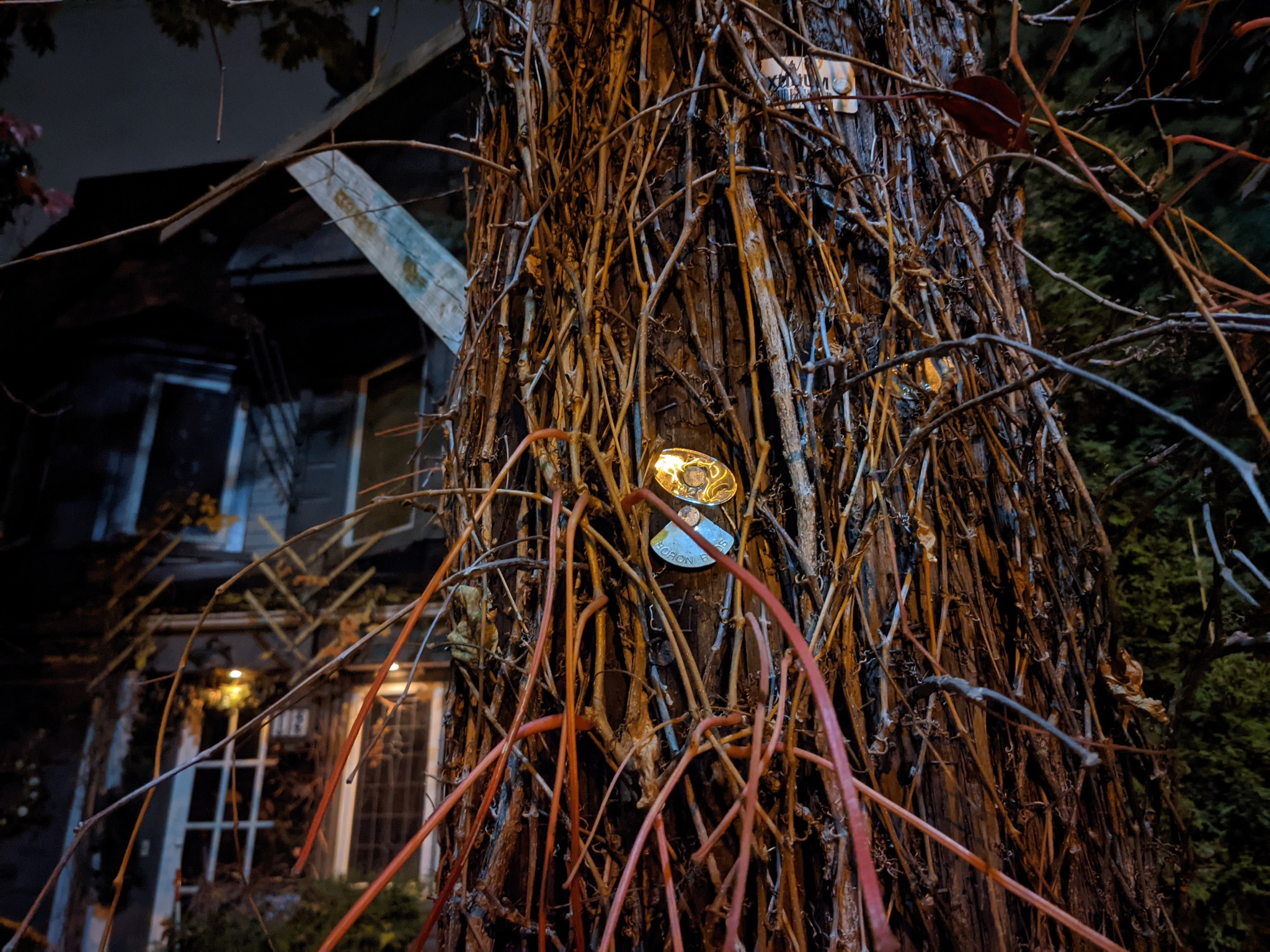
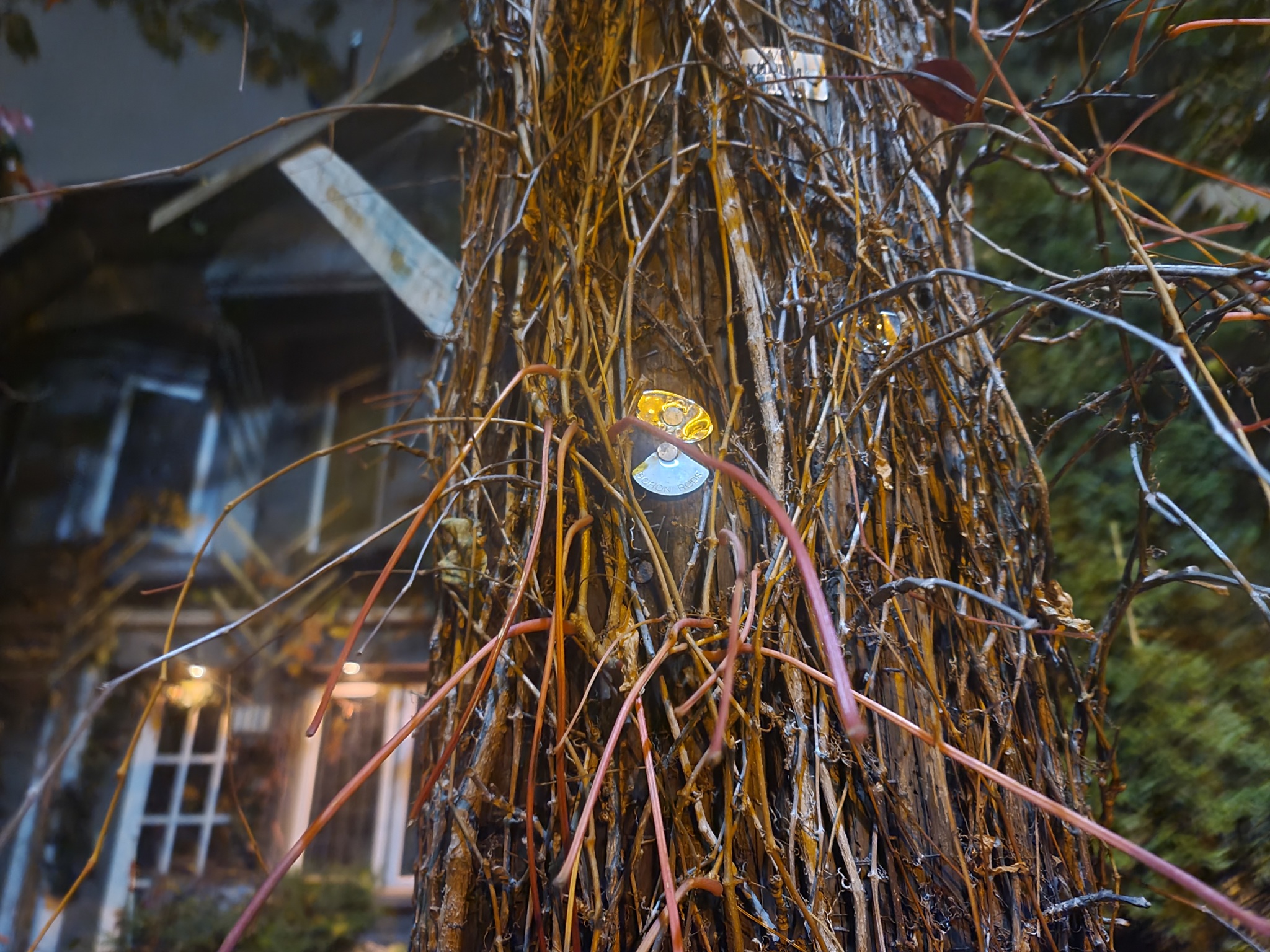

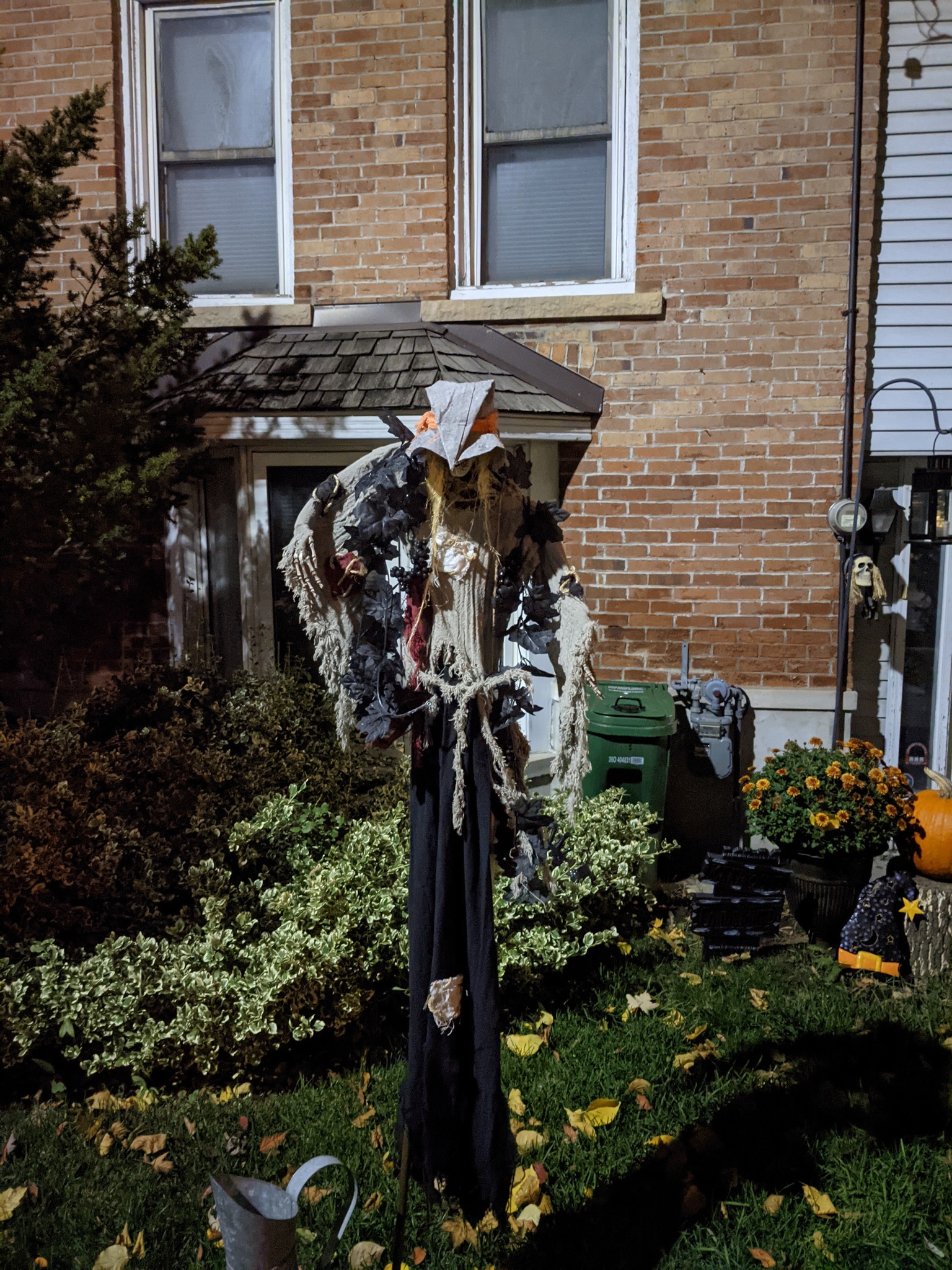

Before bed, I take all three phones out again for a night mode test, and I'm very impressed with the iPhone 12 Pro. While the same contrasty, almost-overprocessed look is still here, Apple still ekes out plenty of detail from the shots, and night mode is truly just a joy to use largely because I don't have to think about it.
While it's true of all parts of the phone, the fact that the iPhone is reliable in any lighting condition is what I find so attractive about using it. This week has been largely about using my phone when necessary and ensuring that I can balance the needs of work and childcare. I took so many photos of my daughter this week and most of them turned out pretty darn well, and even if they're not the best photos I could take on a phone, they're all extremely useable.

The other aspect of photography I enjoy more on the iPhone has to do with iOS as a platform; apps like Halide and Clips make it so easy to use the iPhone's camera in interesting ways, and even apps like Instagram and TikTok are just objectively better, and run more smoothly, on iOS compared to Android. This has been an advantage of Apple's for years, and it doesn't appear to be changing anytime soon.
As I head to bed, my battery is at a spooky 3%.
iPhone 12 Pro review, day seven Should you buy it?
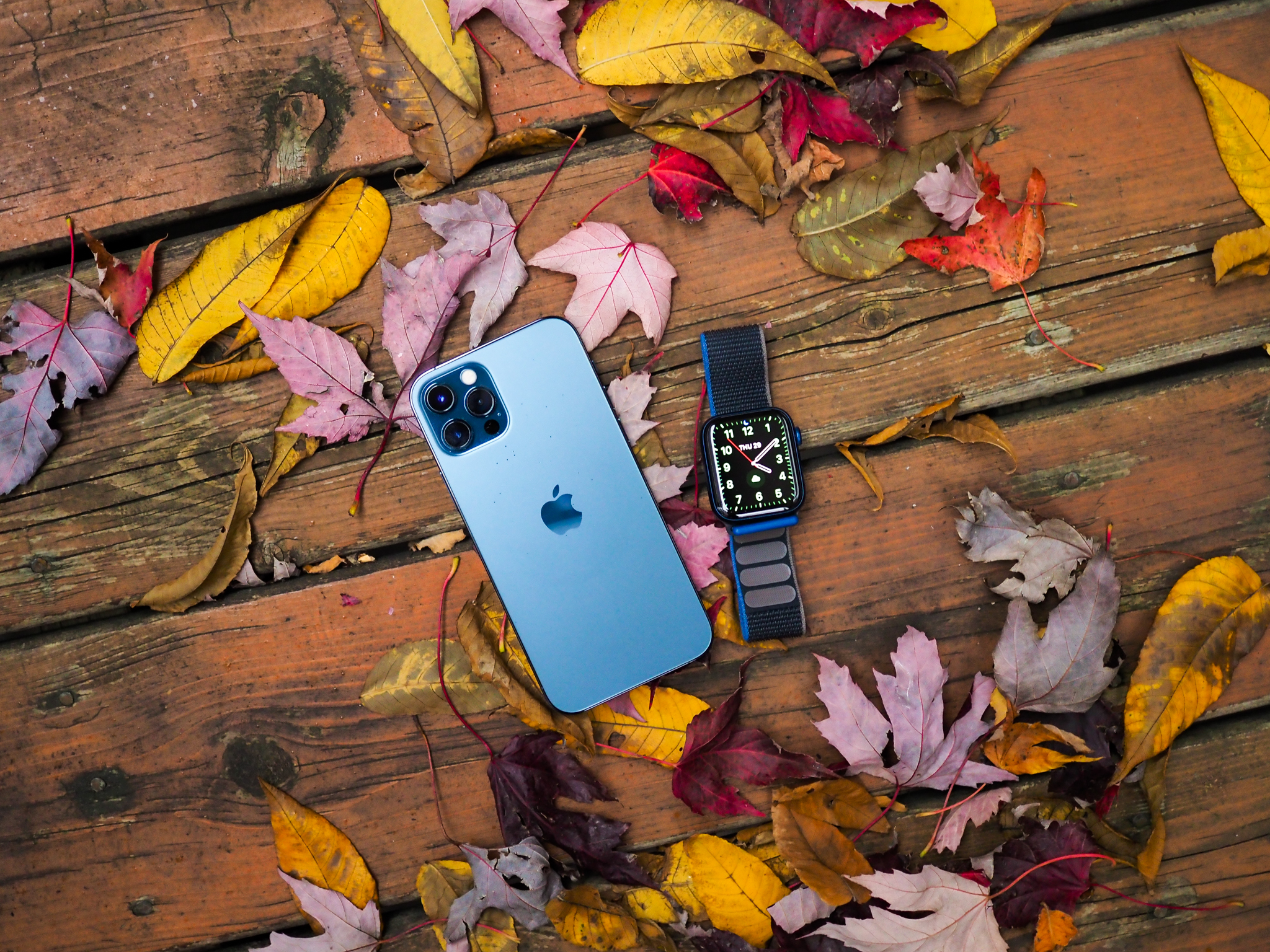
This hasn't been the iPhone 12 Pro review I intended to write, but in a way, it's been a blessing to sort of diarize my experience with a brand new phone this way.
I think the iPhone 12 Pro is one of the best phones available right now, and possibly the best phone of 2020. But its success is somewhat undermined by the upgrades in the $829 ($799 if you go through a carrier) iPhone 12 over that phone's predecessor, and how much value you're getting for your dollars. If you don't take a lot of portrait photos or shots at night, you can safely stick to the iPhone 12 and not miss out much.
But as I learned in my week with the iPhone 12 Pro, those two additional features, plus the beautiful stainless steel build, are indeed worth the extra money, at least to me, and if I had to choose between the two models I'd stick with the Pro every time.
You should buy this if ...
You must have telephoto. If you're choosing between the iPhone 12 and 12 Pro, the addition of a telephoto lens is what will likely sell you on the extra money. Lidar and a stainless steel frame are bonuses, but likely not worth the extra cash.
You love the Pro's matte glass back. Personally, I love the iPhone 12 Pro's contrasting look, between the frosted glass back and the polished stainless steel sides. I love the additional heft that brings along, too.
You can't handle a phone with just 64GB of storage. The iPhone 12 Pro comes with 128GB of storage standard; the iPhone 12 needs a $50 upgrade for that, bringing it to $849 (or $880 unlocked), or just $120 - $150 shy of this model. If you're someone, like me, who fills up their phone with apps, photos and other crap, get this one.
You need the best iPhone currently available. If you can't wait for the iPhone 12 Pro Max, which debuts in a few weeks, and can't stand the idea of using a larger phone display, this is Apple's best iPhone available right now.
You should not buy this if ...
You don't have $1000 to spend on a new iPhone. It goes without saying, but there are other iPhones Apple will sell you that cost a lot less than the iPhone 12 Pro, and you're not losing a ton going with any of them. The iPhone 12 is the logical move, but there's also the iPhone 11, which is slightly bigger and a little less premium, or the iPhone 12 mini which releases in early November.
You don't need a 5G phone right now. Don't buy an iPhone 12 Pro for 5G. Buy it in spite of 5G. If your area has great 5G signal and you're looking to see what the fuss is about, go nuts. But don't expect miracles.
Daniel Bader is a Senior Editor at iMore, offering his Canadian analysis on Apple and its awesome products. In addition to writing and producing, Daniel regularly appears on Canadian networks CBC and CTV as a technology analyst.
